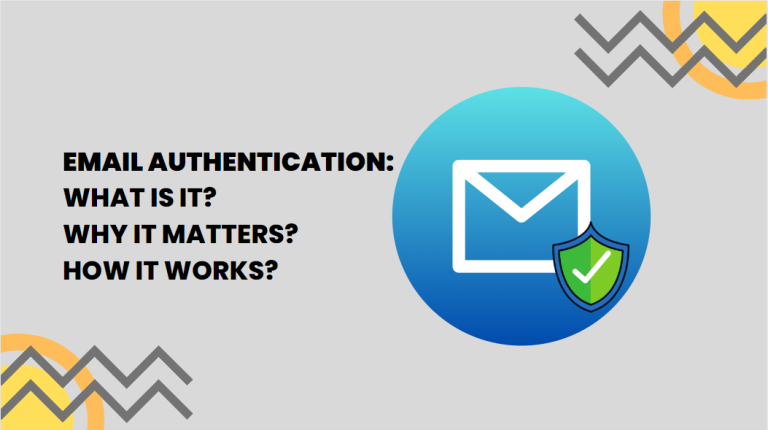The email has been around for decades and has become a necessity in the modern world. However, email is not without its problems. One of the most common email issues is that it can be effortless to fake or spoof. It is because email does not have any authentication process in place, so there is no way to know if the person sending you an email has sent it or if their account was hacked.
To avoid such issues, use email authentication to prevent spoofing or spam emails by using digital signatures and encryption to verify the sender’s identity.

What is Email Authentication?
It is a process that verifies the identity of an email sender. It ensures that only authorized users can send emails from your domain name, which protects your brand reputation and reduces the risk of cyber-attacks.
Why it is Important?
It is significant for businesses because it can help to avoid data breaches and other cyber-attacks.
There are many benefits that companies can get from email authentication:
- Avoid any spam or phishing emails.
- It helps to protect the company’s confidential information by preventing unauthorized access.
- Ensures that the emails come from a trusted sender.
- It helps to protect the brand reputation.
- Increase the trustworthiness of email communications
- It improves email deliverability by ensuring that all emails come from a verified domain name.
How Email Authentication works?
Email authentication protocols are how email servers can verify that an email address is valid. They are essential because they help to prevent spam, phishing, and other malicious emails from being delivered to end users.
Some common methods of email authentication include:
1. SPF
SPF stands for Sender Policy Framework. It’s a system that uses DNS to verify the legitimacy of an email sender by checking whether they are authorized to send emails from the domain they are using in the From field. One way to set up SPF records is by adding TXT entries in your domain’s DNS settings. This type of verification does not protect against spoofing from other domains.
2. DKIM
DKIM stands for DomainKeys Identified Mail. It’s an authentication method that uses digital signatures to verify the authenticity of an email message or its parts, like headers or attachments.
The sender signs their message with DKIM before sending it out, and then recipients can check if the signature matches what was sent with a public key published in DNS or with a key stored on the recipient’s mail server.
As you can see, DKIM is a method for securing email message integrity and authentication. But you cannot use it alone as it cannot protect against spoofing from other domains.
3. DMARC
Domain-based Message Authentication, Reporting, and Conformance (DMARC) allow administrators to specify the actions to take when messages fail SPF or DKIM authentication.
The following DMARC record is an example of what should happen when messages fail authentication:
p=none: This record specifies not to take action when the email fails authentication.
p=quarantine: Quarantines the message if it fails SPF and DKIM authentication.
p=reject: This record specifies to reject the email if it fails authentication.
You need to configure your email server to send a DMARC-reject policy, which is email authentication that tells the receiver that the message came from an authorized sender. It stops phishers and other malicious senders from sending spoofed messages using your domain name and claiming they are coming from you.
Subscribe to blogs
Get our latest blogs directly to your inbox.

